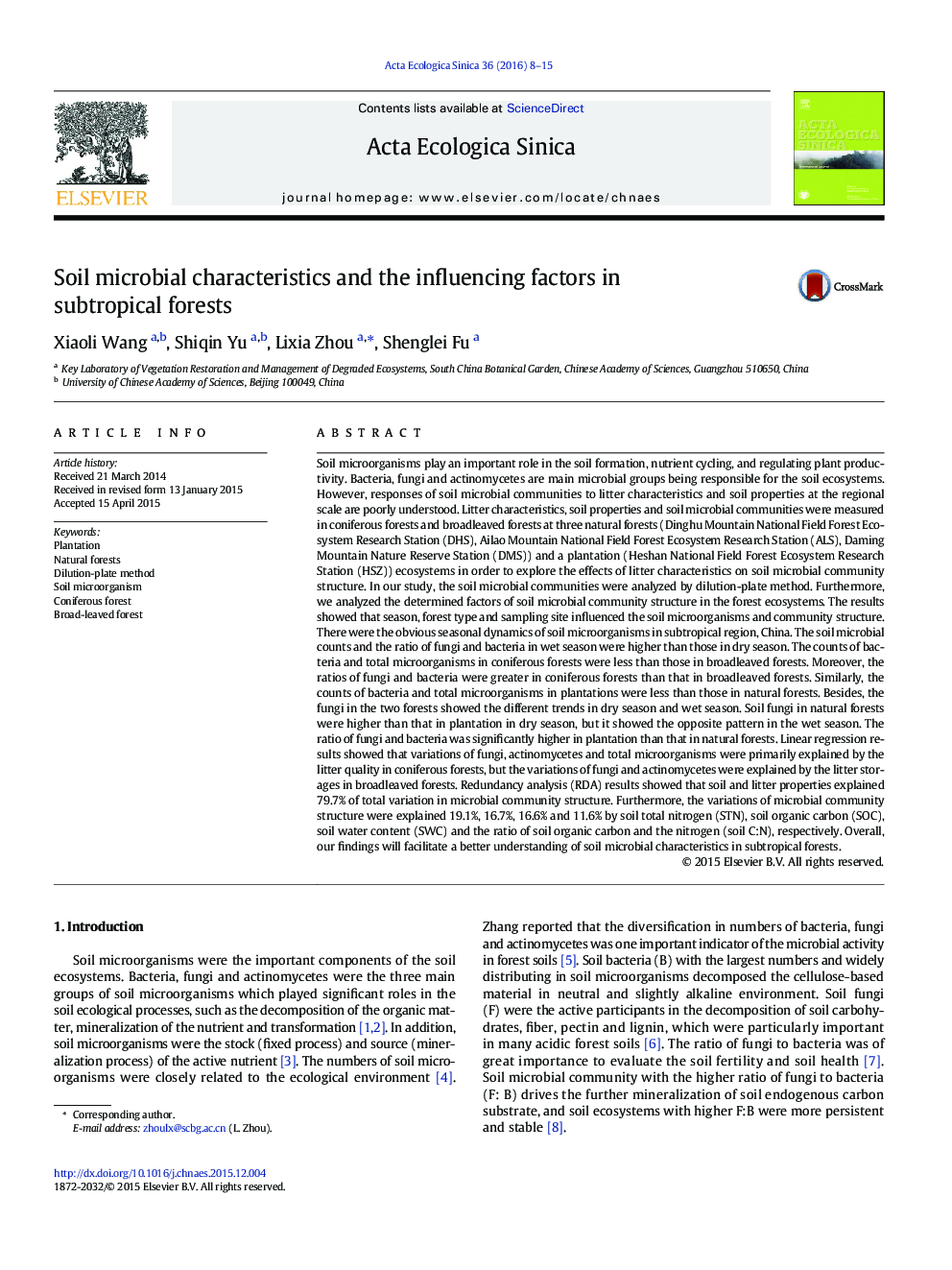| کد مقاله | کد نشریه | سال انتشار | مقاله انگلیسی | نسخه تمام متن |
|---|---|---|---|---|
| 4379758 | 1303935 | 2016 | 8 صفحه PDF | دانلود رایگان |
Soil microorganisms play an important role in the soil formation, nutrient cycling, and regulating plant productivity. Bacteria, fungi and actinomycetes are main microbial groups being responsible for the soil ecosystems. However, responses of soil microbial communities to litter characteristics and soil properties at the regional scale are poorly understood. Litter characteristics, soil properties and soil microbial communities were measured in coniferous forests and broadleaved forests at three natural forests (Dinghu Mountain National Field Forest Ecosystem Research Station (DHS), Ailao Mountain National Field Forest Ecosystem Research Station (ALS), Daming Mountain Nature Reserve Station (DMS)) and a plantation (Heshan National Field Forest Ecosystem Research Station (HSZ)) ecosystems in order to explore the effects of litter characteristics on soil microbial community structure. In our study, the soil microbial communities were analyzed by dilution-plate method. Furthermore, we analyzed the determined factors of soil microbial community structure in the forest ecosystems. The results showed that season, forest type and sampling site influenced the soil microorganisms and community structure. There were the obvious seasonal dynamics of soil microorganisms in subtropical region, China. The soil microbial counts and the ratio of fungi and bacteria in wet season were higher than those in dry season. The counts of bacteria and total microorganisms in coniferous forests were less than those in broadleaved forests. Moreover, the ratios of fungi and bacteria were greater in coniferous forests than that in broadleaved forests. Similarly, the counts of bacteria and total microorganisms in plantations were less than those in natural forests. Besides, the fungi in the two forests showed the different trends in dry season and wet season. Soil fungi in natural forests were higher than that in plantation in dry season, but it showed the opposite pattern in the wet season. The ratio of fungi and bacteria was significantly higher in plantation than that in natural forests. Linear regression results showed that variations of fungi, actinomycetes and total microorganisms were primarily explained by the litter quality in coniferous forests, but the variations of fungi and actinomycetes were explained by the litter storages in broadleaved forests. Redundancy analysis (RDA) results showed that soil and litter properties explained 79.7% of total variation in microbial community structure. Furthermore, the variations of microbial community structure were explained 19.1%, 16.7%, 16.6% and 11.6% by soil total nitrogen (STN), soil organic carbon (SOC), soil water content (SWC) and the ratio of soil organic carbon and the nitrogen (soil C:N), respectively. Overall, our findings will facilitate a better understanding of soil microbial characteristics in subtropical forests.
Journal: Acta Ecologica Sinica - Volume 36, Issue 1, February 2016, Pages 8–15
